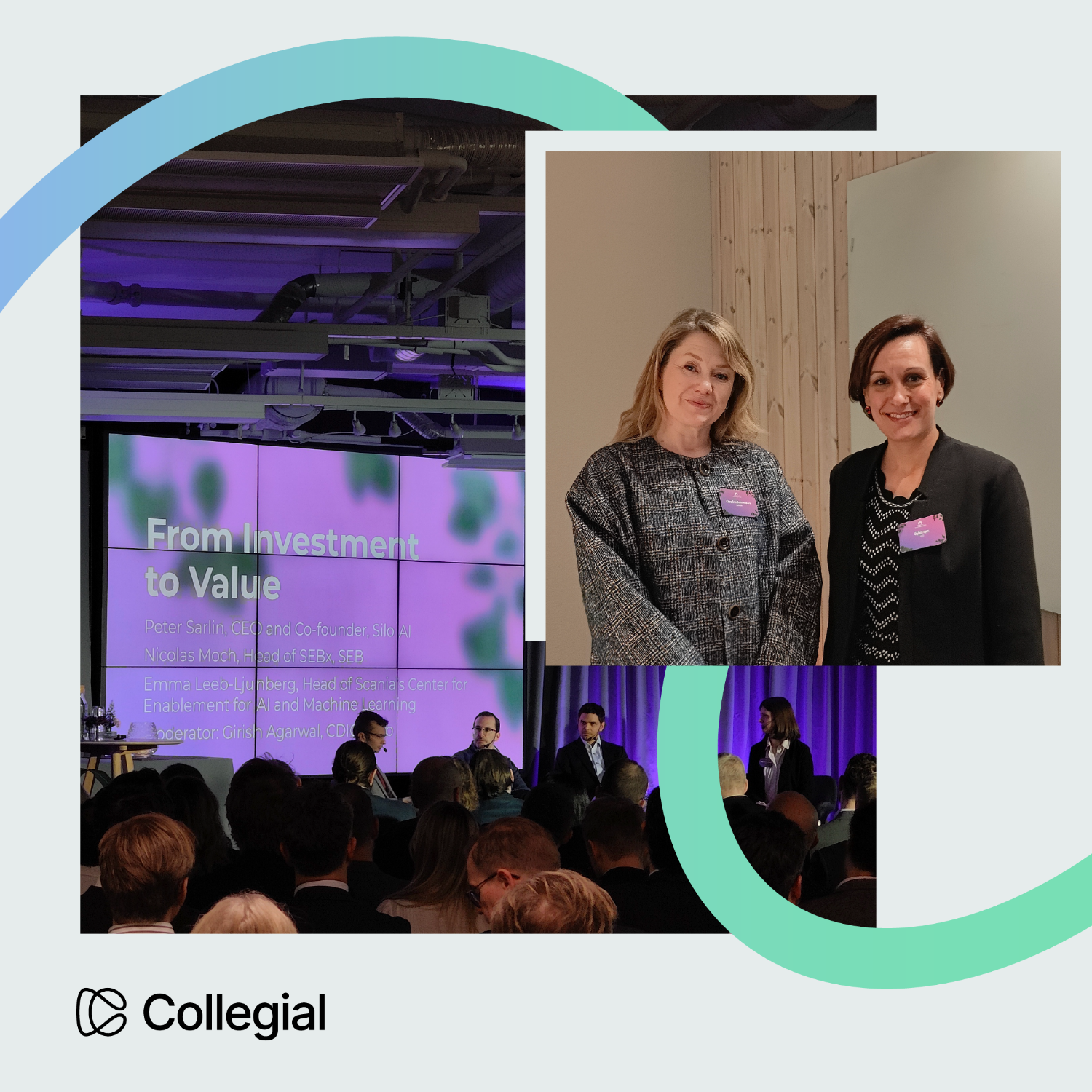Manufacturing leaders have moved past debating whether their engineering teams need to evolve. Now, it's all about how quickly and effectively they can respond to constant technological change. Innovation cycles are accelerating, and new tools are becoming essential parts of daily operations. This reality puts growing pressure on engineers to stay adaptable and capable in a rapidly shifting environment.
For learning and development (L&D) professionals, this moment brings both urgency and opportunity. Traditional training often falls short when skills need to evolve as fast as the technologies themselves. Engineers today need more than just technical instruction; they need learning that's deeply relevant, immediately applicable, and aligned with business priorities.
This is where L&D teams play a critical role. By creating focused, flexible, and forward-thinking learning opportunities, L&D professionals can help engineering teams not just keep pace with change, but actually lead it.
![]()
1. Engineering 4.0: What’s Changing, and Why It Matters
Engineering 4.0 represents a fundamental shift in how we design, build, and even maintain products. It brings together powerful technologies like artificial intelligence, the industrial Internet of Things (IIoT), robotics, additive manufacturing, and advanced data analytics. These aren't just isolated tools; they're deeply integrated into connected production systems, creating smarter, faster, and much more adaptive operations right across the manufacturing sector.
For engineers, this shift is reshaping what it means to be truly effective on the job. Just traditional mechanical or electrical expertise isn't enough anymore. Engineers are now expected to navigate complex data environments, work with autonomous systems, and collaborate across all sorts of disciplines from software development to cybersecurity. The job has become as much about systems thinking and digital fluency as it is about deep technical knowledge.
This transformation brings some clear pressure points for engineering teams. Innovation cycles are shorter, demanding faster problem-solving and constant adaptation. Digital tools are embedded in every part of the workflow, meaning engineers need to be comfortable with both the physical and virtual aspects of production. At the same time, roles are becoming more cross-functional. The ability to communicate and collaborate beyond your technical silo is quickly becoming a core skill.
For manufacturing companies, the message is clear: keeping engineering talent relevant requires more than just hiring for today's needs. It demands a commitment to building future-ready capabilities that grow right alongside the pace of innovation.
2. The Risk of Inaction: Skills Gaps and Operational Vulnerability
As Engineering 4.0 accelerates, many manufacturing organizations are seeing a widening gap between the skills their teams have and the skills they truly need. This isn't just a theoretical concern anymore; it's a growing operational risk.
According to a recent report by Deloitte and The Manufacturing Institute, the U.S. manufacturing industry could face over 2 million unfilled jobs by 2030 because of skill shortages. These gaps aren't just about finding people to fill roles. They're about keeping production lines running efficiently, delivering innovations on time, and staying competitive in an increasingly digital market.
When engineering teams don't have the skills for modern technologies, the impact ripples across the entire business. Innovation slows down, fixing issues takes longer, and new tools often don't get used properly or at all. This means more downtime, less flexibility, and your organization becoming less resilient when disruptions hit.
In today's high-stakes environment, even small delays or inefficiencies can be incredibly costly. Outdated skills can cause bottlenecks in product development, errors in automated systems, and make it harder to adopt new technologies. Over time, these problems add up, leading to a much bigger issue: falling behind in a market that thrives on speed, adaptability, and digital maturity.
The reality is clear: organizations that ignore the skills gap risk operational instability and a long-term decline.
 3. Upskilling Engineers: A Strategic Business Lever
3. Upskilling Engineers: A Strategic Business Lever
Upskilling is the catalyst for transformation. Manufacturing companies that invest in their workforce are better equipped to adapt quickly, uphold high standards, and navigate disruptions. Elevating the skills of engineers enhances agility, fortifies operations, and fosters a culture of innovation.
Rather than relying solely on external recruitment, forward-thinking companies are cultivating talent from within. This keeps valuable company knowledge in-house and boosts employee retention and engagement.
Upskilling also delivers measurable benefits. Engineers who continuously develop skills find process improvements, confidently adopt new tech, and collaborate better across departments. These actions directly impact efficiency, cut downtime, and improve product quality.
For upskilling to truly work, it must be tied directly to your business strategy. This means creating learning programs that align with specific transformation goals, whether it's enabling smart factories or implementing advanced robotics. By making learning a key driver of business results companies can turn upskilling into a powerful tool for achieving operational and strategic goals.
4. What Effective Learning Looks Like in Engineering
To truly prepare engineers for the future, learning must be transformative. The most effective engineering L&D programs share three defining traits: they are hands-on, modular, and role-relevant.
- Hands-on learning ensures that engineers can practice new concepts in realistic environments. Whether it’s simulating a robotic process, debugging a digital twin, or working through predictive maintenance scenarios, experiential learning cements knowledge in ways passive instruction cannot.
- Modular learning supports flexibility and scalability. Engineers operate on tight schedules, often with shifting priorities. Short modules allow learning to fit into the flow of work and enable targeted skill development without requiring long time away from critical tasks. Modular programs can also evolve more easily with emerging technologies, keeping content fresh and aligned with strategic needs.
- Role-relevant learning means content is tailored to what engineers actually do. L&D must partner with engineering teams to develop learning journeys that reflect real responsibilities, tools, and technologies used in their daily work.
Perhaps most critically, effective learning is embedded into real-world contexts. Integrating learning with active projects through cross-functional team sprints or digital tool implementation accelerates adoption. When engineers see a direct connection between learning and impact, engagement goes up and outcomes improve.
Blended learning approaches work especially well. Combining self-paced e-learning, expert mentoring, hands-on simulations, and real-world application creates a dynamic learning environment that supports different learning styles and career levels. This mix strikes a balance between scale and personalization, offering both broad access and meaningful depth.
5. L&D’s Role in Empowering Engineering Teams
Learning and development leaders have a unique opportunity to support the Engineering 4.0 transition. This means going beyond delivering programs and becoming true strategic partners.
It starts with working closely with engineering and operations leaders to understand shifting skill needs. What capabilities will matter in the next 12 to 24 months? Which technologies are being adopted? Where are the current bottlenecks? With this insight, L&D can ensure learning efforts are timely and relevant.
Strong L&D teams also help build a culture of continuous learning. This means making learning part of everyday work, encouraging curiosity, and celebrating progress. When development is embedded in the culture, learning becomes a shared expectation rather than a choice.
Conclusion: From Learning to Transformation
Upskilling engineers is a proactive growth strategy in the era of Engineering 4.0, where talent is the true differentiator and learning is the key to unlocking it. Organizations that invest in structured, relevant, and forward-thinking learning programs will not only close today's skills gaps but also unlock tomorrow's opportunities.
For L&D leaders, this is a moment to lead. By acting as catalysts for capability-building, they can drive real business impact, support innovation, and future-proof engineering teams.
 Expert upskilling for future manufacturing: Ingenjör4.0
Expert upskilling for future manufacturing: Ingenjör4.0
Developing advanced skills and promoting lifelong learning remain key challenges for Swedish industry and its workforce. Ingenjör4.0 program provides a unique, large-scale, and forward-thinking learning opportunity tailored for professionals in the sector. This expert-level upskilling program is designed to directly address the critical skills gaps identified across Sweden. Its goal is to enhance the global competitiveness of Swedish industry and strengthen Sweden’s role as a leader in innovation and digitalization.
Ingenjör4.0 was initiated by the Swedish Production Academy within the strategic innovation program Produktion2030. Since its launch in 2020, engineers from leading companies such as Volvo, SKF, and AFRY have taken part in this ongoing upskilling journey.
Learn More: https://www.ingenjor40.se/



